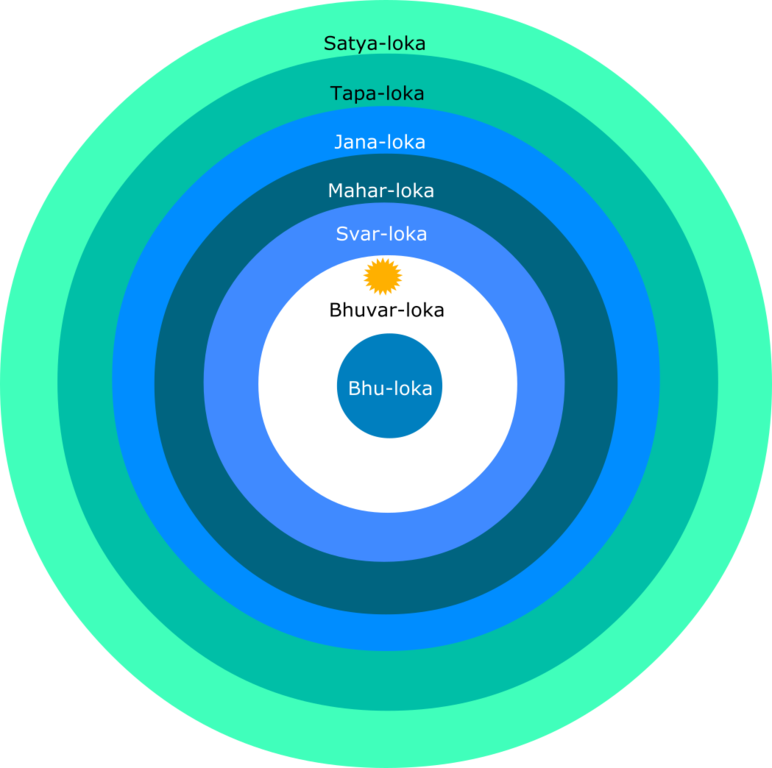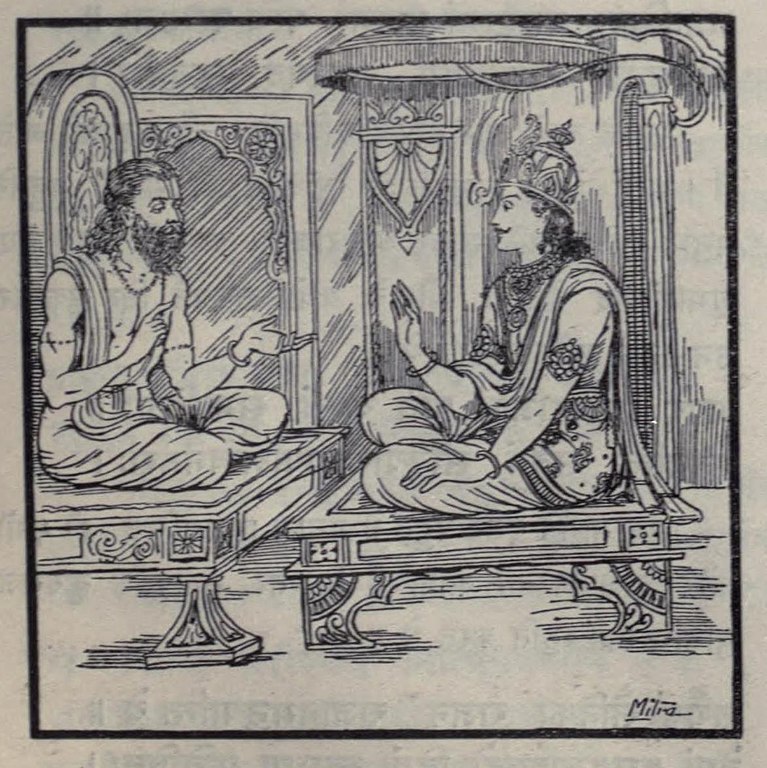
Table of Contents (The Complete Mahabharata in Simple English)
Previous Post: Jaratkaru Marries Vasuki’s Sister
| Note: In the previous post, we read about the marriage of Jaratkaru with Vasuki’s sister and the conception of their child (although Vasuki’s sister didn’t know she had conceived). In this post, we will read about the incident where Jaratkaru leaves his wife’s house to return to his ascetic penances. |
One day Jaratkaru was sleeping with his head on his wife’s lap. He looked very tired and slept till the evening ‘sandhya’ when the sun was about to set.
This put his noble wife in a dilemma since the rishi was both punctual and particular about performing his religious ceremonies at this time. On the one hand she was afraid of waking him up and offending him, and, on the other hand, she was concerned that if he did not do his evening ‘sandhya’ ritual before twilight turned into night, he would lose his virtue.
As she reasoned with herself, she concluded that a virtuous person losing his virtue was a greater loss than facing his anger. Speaking in a sweet and gentle tone, she said, “O fortunate one, the sun is setting. It’s time for your evening sacrifices, perform your prayers after purifying yourself with water and saying Vishnu’s name.”
The great saint, thus awoken by his wife, was outraged. His upper lip quivered as he said, “O pleasant one of the Naga race, you have insulted me. I strongly believe that the sun does not have the power to set while I am sleeping. It is said that an insulted person should not live in the place where he has been insulted, this is especially true for virtuous people.
Hearing these words Jaratkaru’s wife trembled with fear. She said, “O Brahmana, I did not wake you up to insult you. I woke you up to help you maintain your virtue (which had been accumulated by Jaratkaru through regularly performing the evening prayers).” But these words had no effect on Jaratkaru who was possessed with anger and desirous of leaving his wife.
The rishi said, “O fair one, I have never lied, therefore I must do what I have said, and leave this place. It was clearly decided between us that I will leave the moment you say or do anything that displeases me. O pleasant one, we have lived happily, therefore, after I leave, tell your brother that Ihave left, and do not grieve for me.
Vasuki’s beautiful sister was filled with fear and sorrow and her face turned pale when she heard these words. However, she mustered the courage to fold her hands and say these words to her husband, “It is not correct of you to leave me when Ihave not committed any fault. You tread on the path of virtue and so do I. My heart has been fixed on the welfare of my serpent relatives. The reason for our marriage has not yet been accomplished. We do not have any offspring as yet. This offspring is destined to save my relatives from their mother’s curse. How can I tell my brother that you have left and what will my brother say? O noble brahmin, the welfare of my relatives depends on our child. Moved by compassion for them, I request you to not leave me. O excellent brahmin, you are a high-souled person. I simply cannot understand why you are leaving me when I have not made any mistake?”
Hearing his wife’s words, the rishi said that which was proper and suitable for that moment: “O fortunate one, you have already conceived a high-souled rishi who is learned in the Vedas and their branches. This child, in your womb, is resplendent life Agni himself.”
After speaking these words, the great rishi of virtuous soul left with his heart set upon resuming his ascetic penances.
| Note: In the next post, we will read about the conversation Vasuki and his sister have after Jaratkaru leaves. |
Table of Contents (The Complete Mahabharata in Simple English)
Next Post: Vasuki is Anxious About the Future of the Serpents After After Jaratkaru Leaves his Sister











